If you’ve ever wished dinner could cook in half the time — without sacrificing flavor — a pressure cooker might just become your new best friend. This powerful kitchen tool uses steam and pressure to cook food fast while locking in nutrients and taste. But if the idea of pressurized steam sounds intimidating, don’t worry — today’s pressure cookers are much safer and simpler than the ones your grandma used.
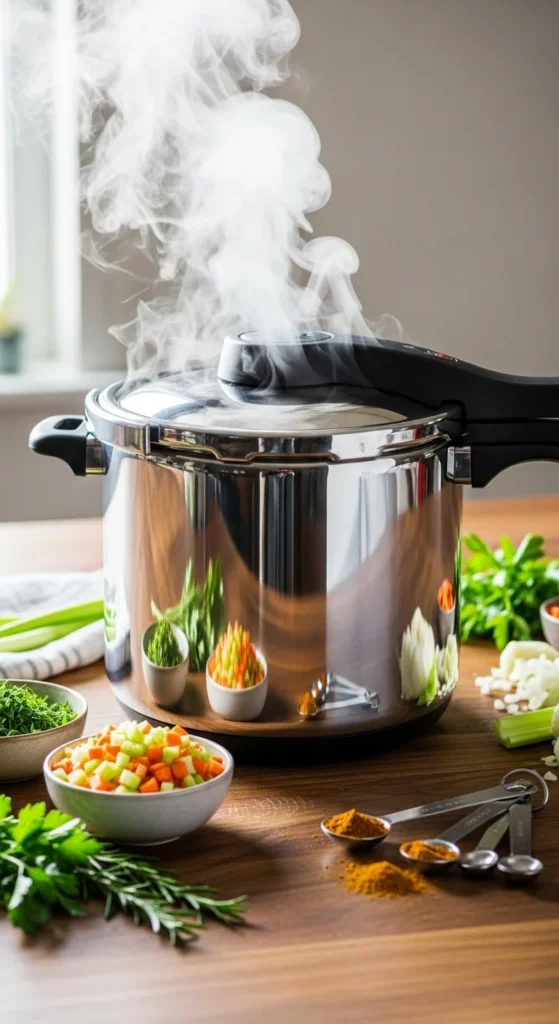
Why Pressure Cookers Are Worth It
Pressure cookers might seem like magic, but there’s solid science behind them. When steam builds up inside the sealed pot, it increases the internal temperature — which means food cooks faster and retains more moisture.
Here’s what makes pressure cooking such a game-changer:
- Time-saving: Beans, stews, and rice cook in a fraction of the time.
- Energy-efficient: Uses less gas or electricity compared to slow simmering.
- Flavor-packed: Locked steam intensifies natural flavors.
- Nutrient-rich: Quick cooking helps preserve vitamins and minerals.
Whether you’re making tender beef stew or perfectly soft lentils, mastering a few safety basics ensures smooth cooking every time.
Step 1: Get Familiar with Your Cooker
Before you even turn it on, take a minute to know your appliance. There are two main types of pressure cookers:
- Stovetop pressure cookers: Heat faster and cook at higher pressure.
- Electric pressure cookers (like the Instant Pot): Easier to use and come with automatic settings.
Each model has a slightly different design, so always start by reading the instruction manual. Look for key components like:
- The lid locking system
- The pressure valve or regulator
- The safety vent or steam release handle
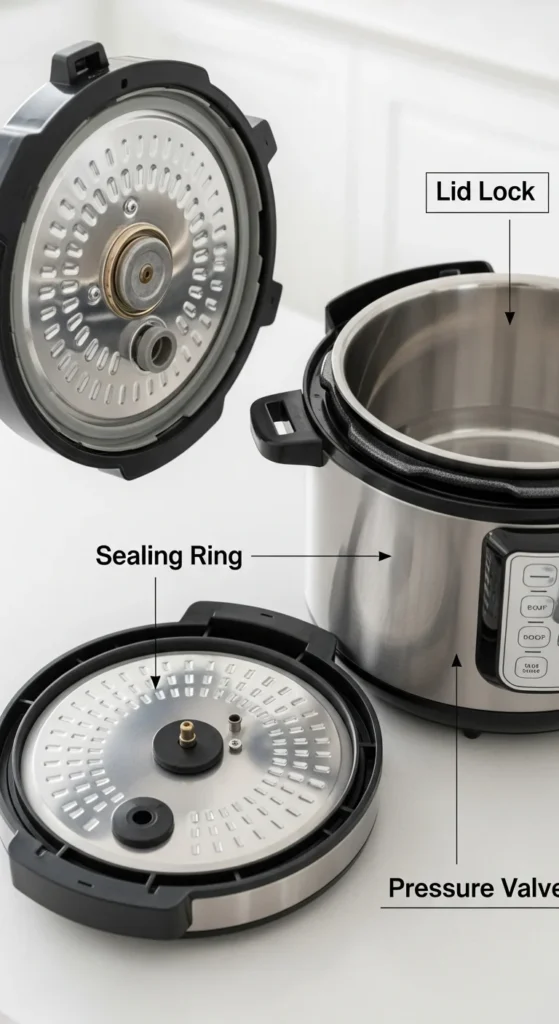
Step 2: Add the Right Amount of Liquid
Steam is what creates pressure, so your cooker needs enough liquid to do its job. As a general rule:
- Always add at least one cup of liquid (water, broth, or sauce).
- Never fill the pot more than two-thirds full, or half full for foods that expand (like rice, beans, or soups).
This balance prevents the cooker from overflowing or sputtering during release.
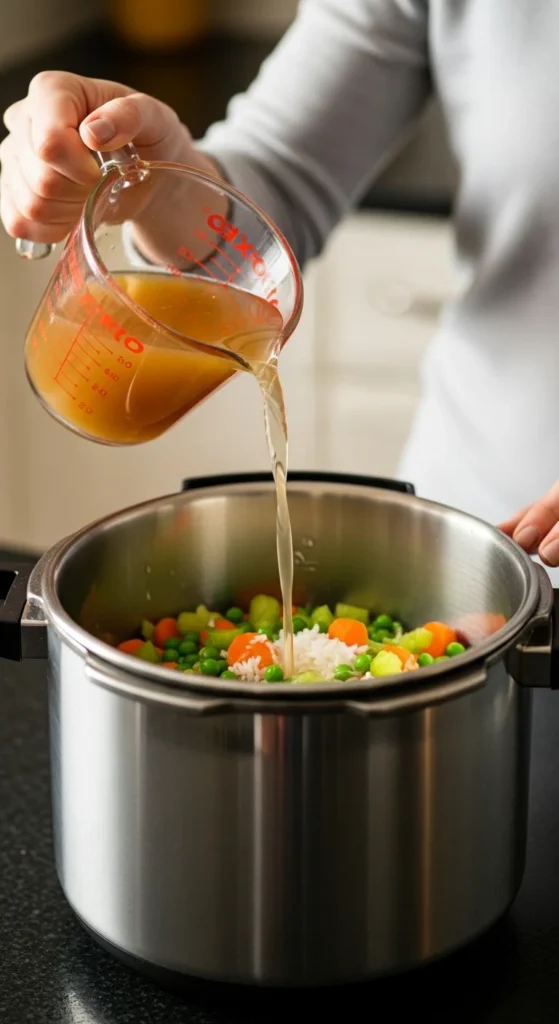
Step 3: Seal and Start Cooking
Once you’ve added your ingredients and liquid:
- Lock the lid firmly. Make sure it’s aligned and sealed properly.
- Set the pressure valve to “Sealing.”
- Choose the correct setting or pressure level (high or low) depending on your recipe.
As the cooker heats up, you’ll see steam escaping briefly — that’s normal! Once full pressure is reached, the valve will close, and the cooking timer begins.
Keep in mind:
- Don’t leave the cooker unattended for long periods.
- If you’re using a stovetop version, maintain steady heat — too high can cause excessive pressure.
Step 4: Safely Release the Pressure
This step makes many first-timers nervous, but it’s easy once you know how. There are two main ways to release pressure safely:
- Natural Release: Let the cooker sit after cooking. The pressure drops gradually over 10–15 minutes. Perfect for soups, meats, and stews.
- Quick Release: Carefully turn the steam release valve to vent immediately after cooking. Ideal for delicate foods like vegetables or fish.
Important:
Never force open the lid until all pressure has been released. Check that the safety pin or float valve has dropped — it’s your signal that it’s safe to open.
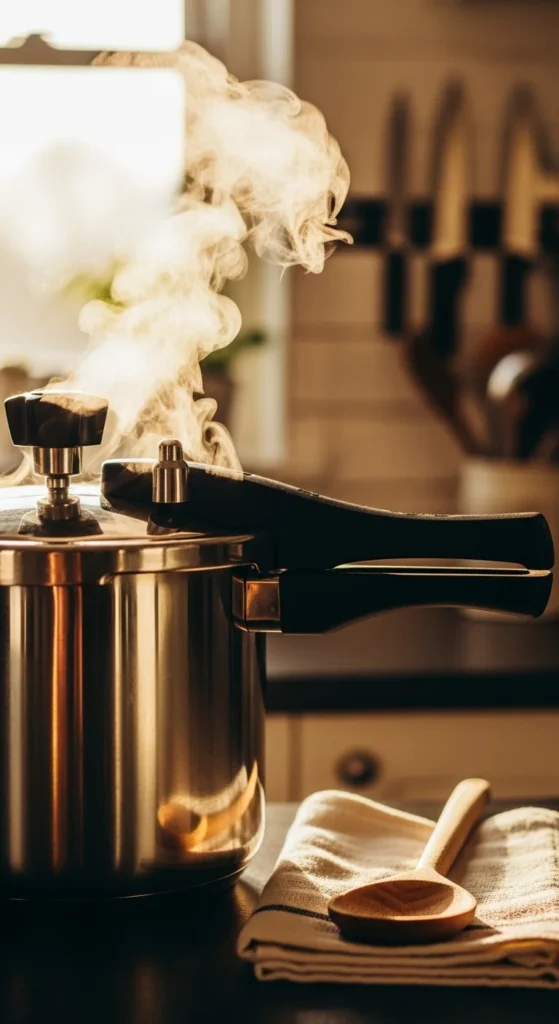
Step 5: Clean and Maintain Regularly
Your pressure cooker will last for years if you care for it properly. After each use:
- Wash the lid, sealing ring, and pot thoroughly with warm soapy water.
- Check that the steam vent and gasket aren’t clogged with food debris.
- Replace the rubber sealing ring every 12–18 months for a tight seal.
If you notice any difficulty locking the lid or building pressure, clean all parts again — even a small bit of residue can cause issues.
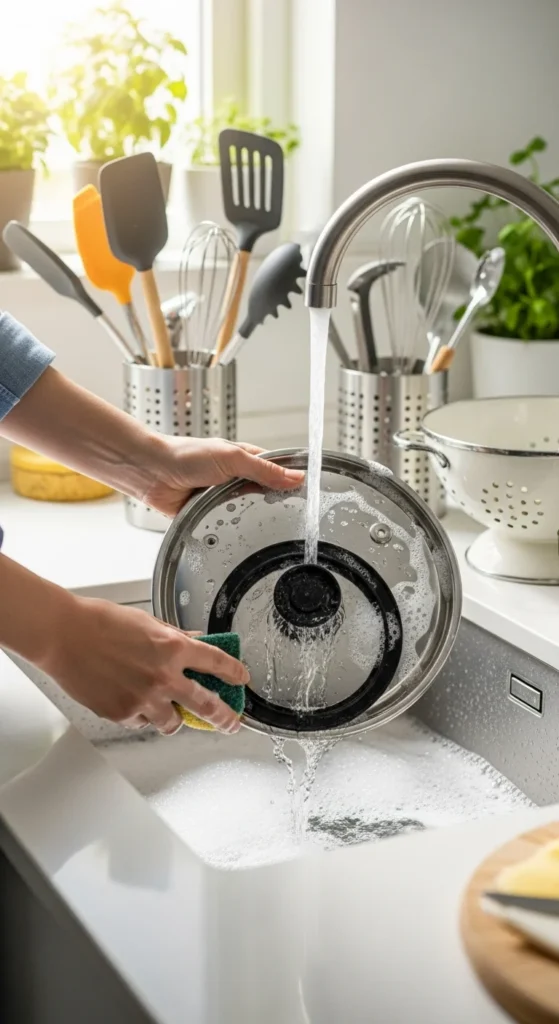
Extra Tips for Safe & Smooth Cooking
- Avoid overfilling. More food doesn’t mean faster cooking — it can block the vent.
- Cut large ingredients into smaller pieces for even cooking.
- Use recommended cooking times. Overcooking under pressure can turn food mushy fast.
- Let it cool naturally if unsure. When in doubt, patience is safer.
- Always check the gasket and vent before starting a new dish.
Once you get comfortable, you’ll find that pressure cooking makes healthy, flavorful meals faster than ever.
Final Thoughts
Using a pressure cooker safely isn’t complicated — it’s all about understanding how it works and following a few simple steps. With the right precautions, you’ll enjoy everything from creamy risottos to tender stews in record time.
So go ahead, dust off that pressure cooker hiding in your cabinet and give it a try. You’ll be amazed how easy (and safe!) it really is.



Leave a Reply